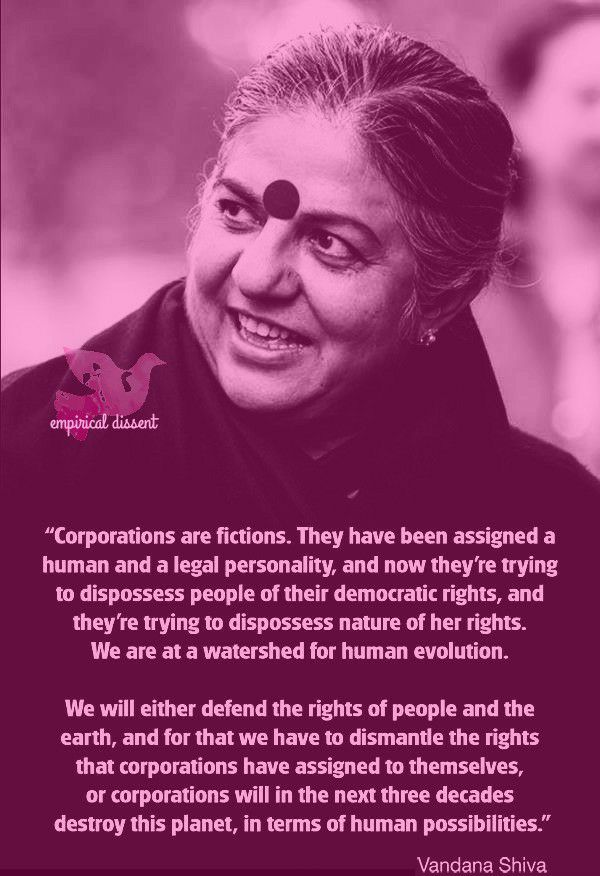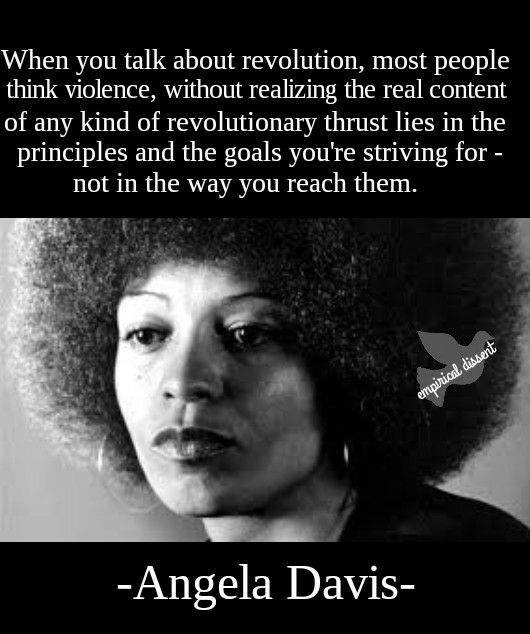
ONLY IN TOP GUN CAN THE MILITARY SOLVE ALL OUR PROBLEMS
Somewhere at a theater near you, Top Gun: Maverick is serving up a feel-good drama about a plucky U.S. Navy pilot who dispatches some unnamed bad guys before he gets the girl.
Meanwhile, a real-life drama is unfolding in Washington around the massive resources we put into the real U.S. military, where the stakes are much different than in the movies.
The world of Top Gun is simple: the hero, Maverick, dispatches a nameless enemy with his fighter jet, and all is well. In the original Top Gun, the hero literally rides off into the sunset.
In real life, hundreds of Americans continue to die each day from COVID — deaths that are at this point largely preventable. Tens of thousands of Americans die each year of opioid overdoses. Millions of us are at risk of eviction or behind on rent. Millions more are about to face another hurricane and wildfire season in the age of climate change.
Needless to say, Maverick is not coming to the rescue. But that isn’t stopping some members of Congress from demanding ever more money for the military. They want well over $800,000,000,000 for the next budget.
It’s as if Top Gun were the real world and a jet fighter were the answer to all our problems.
Our real-life leaders have a damning record in this century of starting wars that can’t be won. The wars in Iraq and Afghanistan kept troops endlessly deployed for years and cost trillions of dollars plus nearly 1 million lives. Yet not even Hollywood could make them look like wins for the United States.
The fighter jets aren’t all they’re cracked up to be, either.
The U.S. plane that was supposed to put all others to shame, the F-35 fighter jet, was called “a scandal and a tragedy” by none other than the U.S. Senate’s own “maverick,” the late Senator John McCain. That’s because it’s a money pit that has spontaneously caught fire at least three times.
The Pentagon tacitly acknowledged these failures when it requested a smaller number of these planes for next year. But some in Congress are eager to force the Pentagon into a bigger buy.
An entirely different sort of movie could come from the story of TransDigm, the Pentagon contractor that swindled the Pentagon (and taxpayers) by charging millions of dollars more than its spare parts should have cost. In this movie, the swindler gets away with it: TransDigm continues to receive Pentagon dollars even after its price gouging was uncovered.
Meanwhile, our over-reliance on sending weapons and military aid as a foreign policy means the U.S. and its allies are failing to seek a viable end to the conflict in Ukraine. The U.S. already spends more than 12 times as much as Russia on our military, so a lack of money clearly isn’t the problem.
All of this adds up to a Pentagon that has so much money, it literally doesn’t know where it all goes — and a government that can barely imagine solutions beyond Maverick in an F/A-18 Super Hornet that the Navy lent to the studio.
While some lawmakers want to add even more to a Pentagon budget that is already higher than it was at the peak of the Vietnam War, others see another way forward. A new bill from Representatives Barbara Lee and Mark Pocan would cut $100 billion from the Pentagon budget to fund neglected priorities and bring some discipline and sense to the Pentagon.
At a bare minimum, lawmakers should refuse to fund the Pentagon at a level higher than the $773 billion already set aside for fiscal year 2023, which Defense Secretary Lloyd Austin says is plenty adequate.
The real world is rife with problems that fighter jets can’t touch, and the real Pentagon has problems far more complex than what you see on the big screen. Legislators should embrace the real world when it comes to Pentagon spending and say that more isn’t always more.
It might even be the most maverick move there is.
Federal budgeting expert Lindsay Koshgarian directs the National Priorities Project at the Institute for Policy Studies. This op-ed was distributed by OtherWords.org.
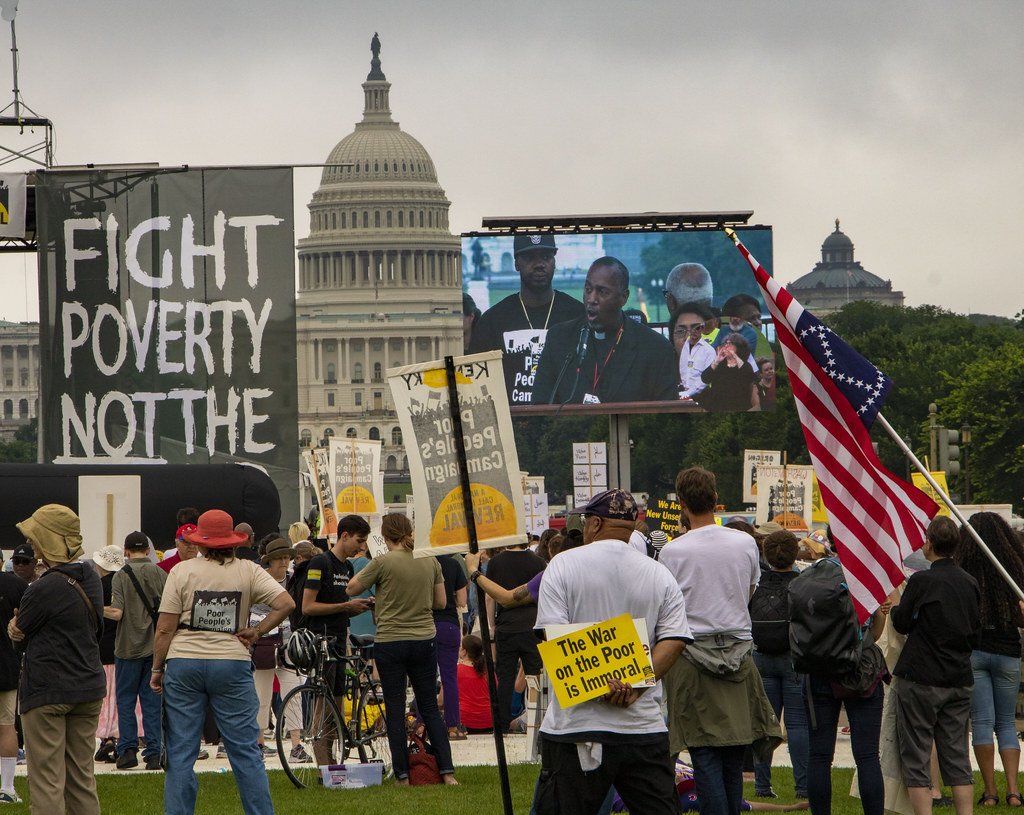
KEEPING WORKERS POOR IS BAD FOR BUSINESS
At America’s biggest low-wage employers, chief executives now pocket 670 times more than their workers.
By Sam Pizzigati | June 14, 2022
CEOs at America’s biggest low-wage employers now take home, on average, 670 times what their typical workers make.
But we don’t just get unfairness when a boss can grab more in a year than a worker could make in over six centuries. We get bungling and inefficient businesses.
Management science has been clear on this point for generations, ever since the days of the late Peter Drucker.
Management theorists credit Drucker, a refugee from Nazism in the 1930s, for laying down “the foundations of management as a scientific discipline.” Drucker’s classic 1946 study of General Motors established him as the nation’s foremost authority on corporate effectiveness.
That effectiveness, Drucker believed, had to rest on fairness.
Corporations that compensate their CEOs at rates far outpacing worker pay create cultures where organizational excellence can never take root. These corporations create ever bigger bureaucracies, with endless layers of management that serve only to prop up huge paychecks at the top.
Drucker argued that no executive should make more than 25 times what their workers earn. And, in the two decades after World War II, America’s leading corporate chiefs by and large accepted Drucker’s perspective.
Their companies shared the wealth when they bargained with the strong unions of the postwar years. In fact, notes the Economic Policy Institute, major U.S. corporate CEOs in 1965 were only realizing 21 times the pay their workers were pocketing.
Drucker died in 2005 at age 95. He lived long enough to see Corporate America make a mockery of his 25-to-1 standard. But research since his death has consistently reaffirmed his take on the negative impact of wide CEO-worker pay differentials.
The just-released 28th annual edition of the Institute for Policy Studies Executive Excess report explores these wide differentials in eye-opening detail. The report zeroes in on the 300 major U.S. corporations that pay their median workers the least.
At these 300 firms, average CEO pay last year jumped to $10.6 million, some 670 times their $24,000 median worker pay.
At over 100 of these firms, worker pay didn’t even keep with inflation. And at most of those companies, executives wasted millions buying back their own stock instead of giving workers a raise.
Just as Drecker predicted, this unfairness has led directly to performance issues. Many of our nation’s most unequal companies, from Amazon to federal call center contractor Maximus, have seen repeated walkouts and protests from justifiably aggrieved workers.
Lawmakers in Congress, the Institute for Policy Studies points out, could be taking concrete steps to rein in extreme pay disparities. They could, for instance, raise taxes on corporations with outrageously wide pay gaps.
But with this Congress unlikely to act, the new Institute for Policy Studies report also highlights a promising move the Biden administration could take on its own. The administration could start using executive action “to give corporations with narrow pay ratios preferential treatment in government contracting.”
That would amount to a major step forward, since 40 percent of our largest low-wage employers hold federal contracts. If the Biden administration denied lucrative government contracts to companies with pay gaps over 100 to 1, those low-wage firms would have a powerful incentive to pay workers more fairly.
Various federal programs already offer a leg up in contracting to targeted groups, typically small businesses owned by women, disabled veterans, and minorities.
“Using public procurement to address extreme disparities within large corporations,” the IPS report adds, “would be a step towards the same general objective.”
And a step in that direction, as Peter Drucker told Wall Street Journal readers back in 1977, would honor the great achievement of American business in the middle of the 20th century: “the steady narrowing of the income gap between the ‘big boss’ and the ‘working man.’”
Sam Pizzigati co-edits Inequality.org at the Institute for Policy Studies. His latest books include The Case for a Maximum Wage and The Rich Don’t Always Win. This op-ed was adapted from Inequality.org and distributed by OtherWords.org.
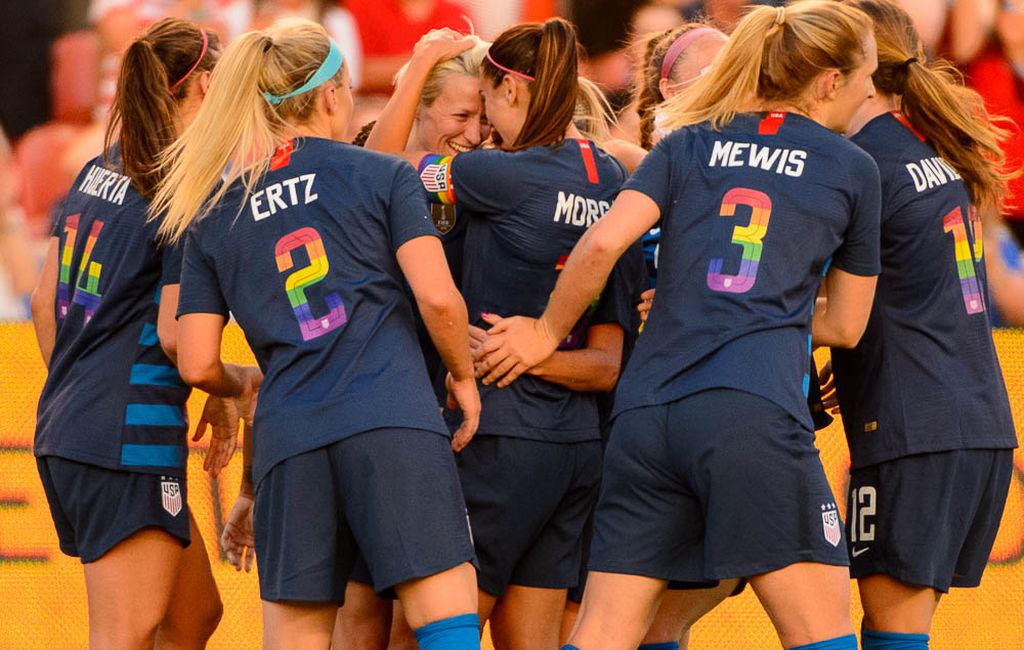
AN EQUAL PAY VICTORY FOR AMERICA’S MOST DOMINANT NATIONAL TEAM
Three years ago, the U.S. women’s soccer team filed a $24 million gender discrimination lawsuit against the U.S. Soccer Federation. This May, after a prolonged and public battle, the players association for the U.S. women’s and men’s national teams negotiated a groundbreaking collective bargaining agreement.
The agreement enshrines a number of new protections for both teams. But most importantly, the agreement creates equal pay structures and requires the U.S. Soccer Federation to share World Cup prize money equally between both the men and women’s national teams.
It’s a first for any soccer federation in the world — and an inspiring victory for fairness in any industry.
Consider the women’s team’s impressive record — which includes four World Cup wins, four Olympic gold medals, and FIFA’s world No. 1 ranking for five straight years. The men’s team, by comparison, failed to qualify for the World Cup in 2018 and hasn’t made the quarterfinals or better in the World Cup since 2002.
Under the previous rules, had the men’s team qualified in 2018, they would have likely received first-round exit prize money worth $8 million — double what the women’s team took home for winning the 2019 Women’s World Cup.
Now the two teams will get equal pay for equal success.
This agreement would not have been possible without decades of tireless activism from players who have decried the double standards present in U.S. and global soccer.
Whether it was turning their warm-up jerseys inside out to obscure the U.S. Soccer Federation crests or kneeling in support of racial justice, the U.S. women’s team embodies a culture of protest that reflects the ongoing struggles of women and marginalized groups across the world.
It’s not hard to see the parallels in the broader economy.
Men, for example, make up an overwhelming majority of top earners across the U.S. economy, even though women now represent almost about the country’s workforce. At the top 0.1 percent level, women make up only 11 percent.
But there’s another important parallel in how the teams corrected this imbalance: unions.
This equal pay for equal success victory could not have been achieved without the collective strength and solidarity that a union provides. By coming together in their contract negotiations, the men’s and women’s teams both inspire and benefit each other.
In the latest collective bargaining agreement, for example, athletes on the men’s national team will now have access to paid child care, a benefit the women’s team has enjoyed for over 25 years. This agreement is a testament to how everyone can win when you fight for those at the bottom.
Even beyond soccer and beyond the United States, the contract is groundbreaking.
It provides a roadmap to equity for other national sports teams, like basketball and hockey, which face similar challenges. It could also be replicated in places like France or Germany, where teams have an even higher level of success and larger budgets than the U.S. Soccer Federation.
But it’s also a roadmap for those of us who aren’t professional athletes.
As unionization efforts take flight at Starbucks, Amazon, and other big, profitable employers, America’s most dominant national sports team is showing how the workers who make companies successful can claim their fair share of the rewards.
Goal!
Brian Wakamo is an Inequality Research Analyst at the Institute for Policy Studies and a co-editor of Inequality.org. This op-ed was adapted from Inequality.org and distributed by OtherWords.org.

Class War: The Jacobin Board Game
The MPI is a proud sponsor of the new game, Class War. Find out more information at:
https://jacobinmag.com/store/product/73
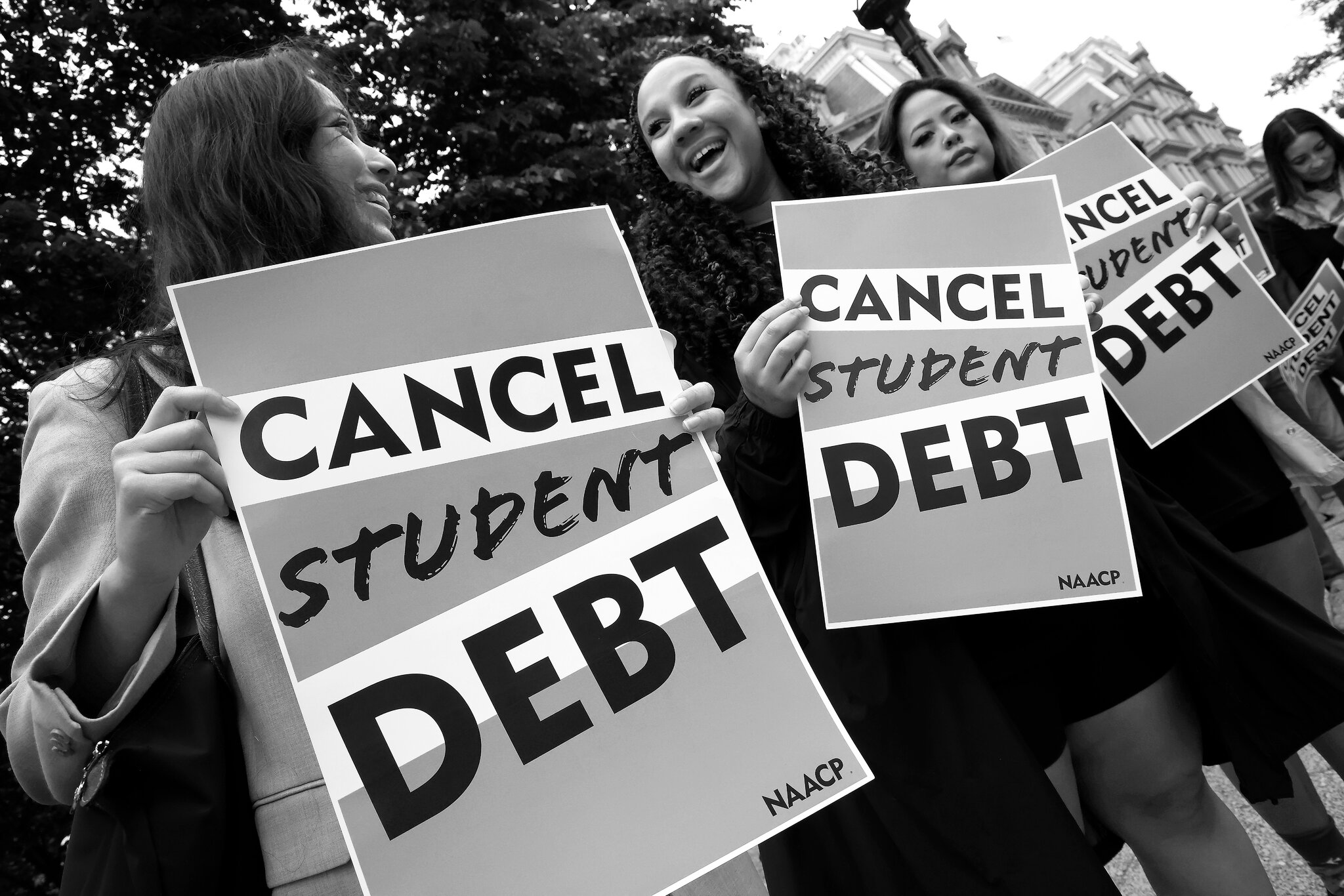
CANCEL STUDENT LOAN DEBT. BAIL OUT REGULAR PEOPLE.
Even writing off every penny of student debt would cost less than Trump’s tax giveaways for corporations and the rich.
By Robert P. Alvarez | May 24, 2022
I borrowed money to pay for college. Like 45 million other Americans who did the same, I owe student loan debt.
My generation was sold a pipe dream about what a degree could mean for our future. I wanted so badly for this dream to come true that I leapt at the opportunity to take out loans.
What I didn’t know then was just how much the cost of higher education was soaring — and that colleges were hiking prices to take advantage of the federal government’s willingness to help poor and low-income students like me cover tuition.
I remember talking to my college counselor about how she paid $240 a year to attend one of the best universities in my home state. Since my counselor attended college, inflation has risen 645 percent. Meanwhile, tuition at the college she attended has risen 11,820 percent.
If you ask earlier generations how they paid for college, they say things like “I worked a part-time job after school.” Yeah, I did that, too. You know what that money went toward? Rent, gas, and bills. My McDonald’s job was barely enough to keep me afloat, let alone pay for my tuition and other expenses.
It was either take out student loans or drop out of college. I chose not to drop out.
I graduated and eventually got a job in my field. But with the rising cost of housing and everything else, that loan debt, which is already inflated by skyrocketing college costs, now feels suffocating. It prevents me from qualifying for a good mortgage loan and makes me second guess whether I can afford to have children.
My loan is just a tiny fraction of the national student loan debt. The $1.7 trillion student loan borrowers owe is a massive policy problem affecting everything from housing to the job market to retirement savings and so much more.
That’s why there’s a growing movement calling on the federal government to cancel some or all of this debt.
If the federal government canceled $50,000 worth of student loans, it would give 36 million borrowers a new lease on life. It could enable them to buy a house, start a family, or open a business.
I know it sounds like a radical idea to cancel up to $50,000 worth of student loan debt. It’s not.
If you’ll remember, former president Donald Trump and the Republican Party passed a $1.9 trillion, high-end tax cut in 2017 that’s been called “socialism for the rich.” It led to billionaires paying a lower average tax rate than the working class for the first time in U.S. history, and is directly responsible for corporate tax revenues plunging to near record lows.
That sounds a lot more radical to me than helping regular people. Even writing off every penny of student debt would cost less than Trump’s tax cuts for corporations and the rich.
President Biden has expressed interest in forgiving some student loan debt, although he’s indicated he may not cancel more than $10,000.
I’d welcome any amount being knocked off my loan. But I fear if Biden cancels only $10,000, he would fumble an enormous opportunity to improve millions of lives and give the economy a desperately needed shot in the arm.
The precedent is there. The U.S. has a long history of economic bailouts dating back to 1792.
The benefits are there. Studies show forgiving student loan debt would create jobs, grow the economy, and have the added benefits of helping to narrow the racial and gender wealth gaps.
And, importantly, student debt forgiveness has broad public support, including among people without a college degree and without student loan debt, as well as young people.
It’s time for the federal government to bail the people out. It’s time to cancel student loans.
This article originally appeared on OtherWords.org.
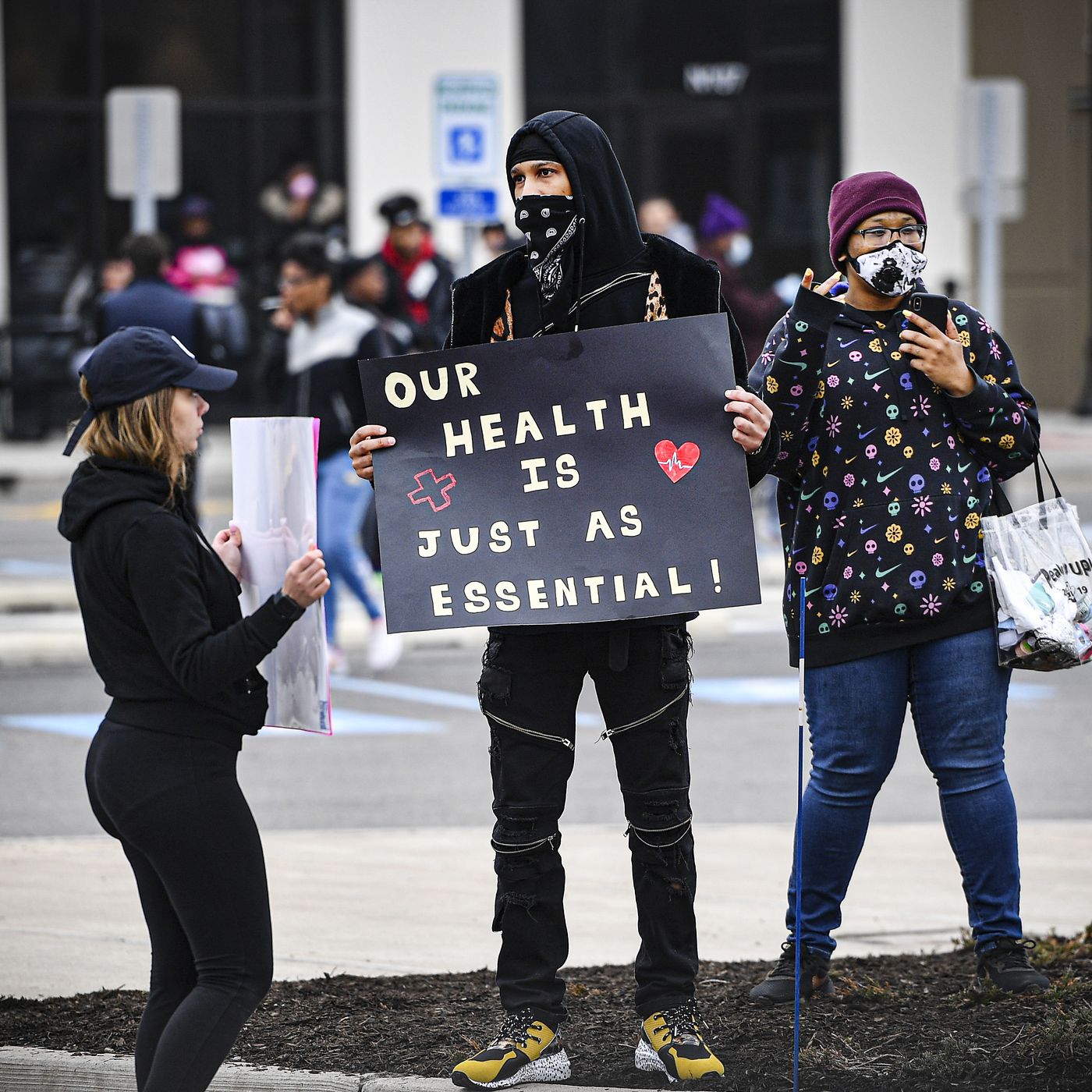
A PANDEMIC OF THE POOR
This op-ed was originally published on April 13, 2022 and updated on May 12, 2022.
As our country passes the once unthinkable toll of 1 million deaths from COVID-19, it can feel impossible to wrap our heads around such a devastating figure. But it’s essential if we want to treat the pre-existing conditions that made it so deadly.
In the beginning, many thought the pandemic would be “a great equalizer,” since the virus doesn’t distinguish between rich and poor. But the tragic reality is that our economic and public health systems do discriminate.
A coalition of researchers convened by the Poor People’s Campaign recently published a report making this reality plain.
The researchers define poverty to include all those living up to 200 percent of the official poverty measure, which has long been considered too low to capture those who struggle the hardest to make ends meet.
Using this measure, they found that COVID-19 death rates in poorer U.S. counties were nearly double those wealthier counties.
The gap was even bigger during the worst phases of the pandemic. During the dark winter of 2020-2021, four and a half times as many people in poorer counties died. During the Delta phase, that number shot up to five times.
Vaccination rates tend to be somewhat greater in wealthier counties, but this study looked at counties where vaccination rates topped more than 85 percent. So vaccination can’t account for the disparity.
What can account for it is poverty. The over 300 counties with the highest death rates had average poverty rates of 45 percent.
These counties include 30 million Americans of every color. Latinx Americans make up about a quarter of their population, while their Black population is about double the national average. What’s more, these counties are home to nearly 30 percent of all Indigenous people in the United States.
They’re also home to many poor whites. Although COVID-related deaths fell disproportionately on people of color, these poorer white people suffered the most deaths.
Experts and impacted people testified recently about these findings in Washington, D.C.
“At times, our county’s rate of COVID hospitalizations and deaths led the nation,” said Bruce Grau of Wausau, Wisconsin. “In the first six months of the pandemic, nearly all of the residents in just one nursing home died penniless and alone.”
“Because I don’t have money, it was 17 days before they told me I had COVID,” testified Tyrone Gardner of Goldsboro, North Carolina. “We were slaughtered for the almighty dollar, and we won’t be sacrificed anymore,” declared Pamela Garrison of West Virginia.
“It was hard for us to get the vaccine,” recalled Vanessa Nosie, a member of the Apache Stronghold in New Mexico. “Our lives aren’t valued. They look at us like it doesn’t hurt that we don’t survive.”
“The findings of this report reveal intentional decisions to not focus on the poor,” summed up Reverend William Barber, co-chair of the Poor People’s Campaign. “We cannot say that this is because of individual choices or behaviors.”
Instead, he declared, “something deeper is at work: systems that prey on the poor — poor white people and poor people of color.”
The lessons of this pandemic are brutal and myriad. One of its most important is that when a public health crisis runs headlong into systemic inequities in wages, wealth, and health care, the result is mass death among those the system is rigged against.
The Poor People’s Campaign has been mobilizing Americans across the country to un-rig this system. “This data is a wake-up call for this nation to heed the calls of the Poor People’s Campaign,” said John Cavanagh of the Institute for Policy Studies.
This summer, the campaign is organizing a mass mobilization of poor and low-income people in Washington, D.C. to fight back. On June 18, thousands of poor people and their allies will arrive in the capital, calling on lawmakers to treat the pre-existing conditions of a pandemic that’s killed 1 million Americans.
They welcome all to join them.
Originally published on OtherWords.org.
